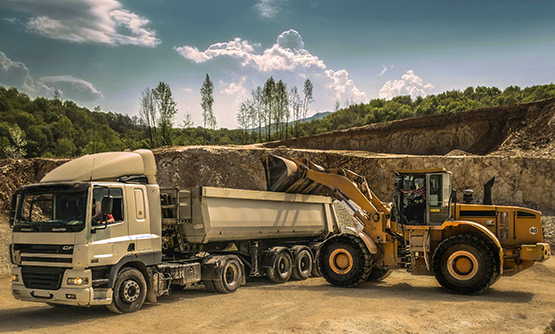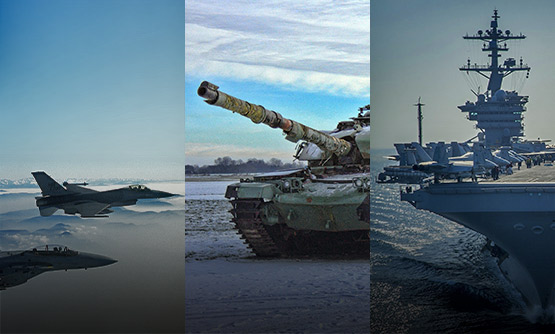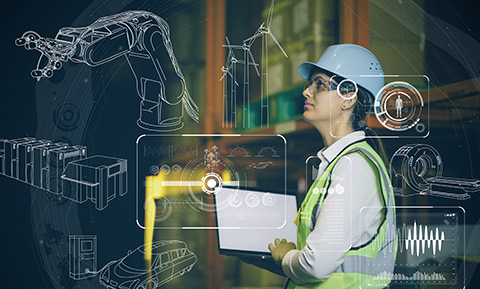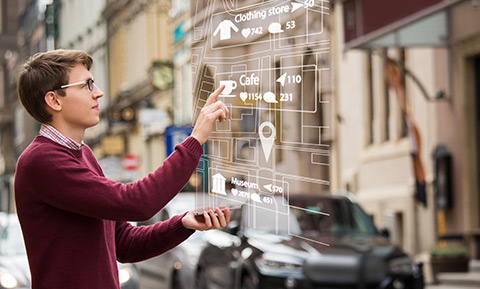The success of automotive companies is predicated on the launching of advanced technologies. In the last
few years, automotive industry experts agree that the near future of the automotive industry will be
benefitted by the use of augmented reality and virtual reality technology. Automotive AR and VR Market
Projected to attain $673.60 Billion by 2025 at 175.7% CAGR, Says AMR (Allied market research).
Let us look at some examples of AR/VR in the automotive industry and outline how AR/VR technology is
helping the automotive industry deliver high-quality services and improve products.
AR and VR - A Game Changer in the Automotive Industry

AR/VR in Automotive Production
OEM Manufacturers are eager to put AR/VR technology to use because of the benefits it brings to
production. It can improve performance across the entire value chain from R&D to manufacturing, sales and
aftersales.
Design and prototyping: After a successful pilot stage, Ford is utilizing AR technology to create
3D models without having to build every single design prototype with clay. Their use of HoloLens to let
designers quickly model changes to cars, trucks, and SUVs is a more inventive example of how this
technology can be used. It allows designers to see their changes on top of an existing physical vehicle,
enabling them to quickly recognize issues with designs before a more labour-intensive prototype is
ordered.
Complex Production: Putting together a car is a complicated process involving the assembly of
thousands of components. Despite the advancements in automated production lines, humans are still a major
contributor to bringing all the parts together to produce the vehicles. Volvo is utilizing
Microsoft's HoloLens to enable production line workers to digitally view assembly instructions in
real-time while working to put together parts of the vehicle. Work instructions, associated technical
drawings, and even videos from the last person who completed the procedure can be viewed in the AR
glasses. This allows workers to keep their hands on their tasks with virtual guidance, negating the need
to walk over to a work station to check anything and increasing outputs.
Maintenance: Similar to complex production, AR glasses have been developed by Mitsubishi so
maintenance workers always have the correct manual in hand when carrying out routine maintenance of
manufacturing equipment. Users even have the ability to enter inspection results with their voice. This
enhances the safety and efficiency of maintenance work.
Training: Employees of automobile companies work with specialized equipment and materials. It
requires specific technical skills, which cannot be obtained through theoretical learning so automobile
companies have to train all new employees. Virtual reality training is well suited for complex skills
development and working out different scenarios. Hence, many car manufacturers, including Volkswagen,
Audi, and BMW use virtual reality in their training programs.
VR training immerses the trainee in a three-dimensional space, simulating a real working environment. The
trainee can start practicing skills in a safe and risk-free environment from the very beginning of the
training. Virtual reality allows you to safely put trainees in any situation and teach them the best
working scenarios.
AR car manuals
An average car owner isn't well-versed in technology, even basic car maintenance operations, such as
replacing the air filter, can be complicated for them.
Interactive manuals with augmented reality solve these problems. So, drivers can easily provide basic
maintenance of their car.
Also, interactive manuals help drivers use their car functions more efficiently. Augmented reality manuals
contain simple step-by-step instructions and video tutorials that allow users to apply the most complex
functions of their cars.
Virtual reality dealerships
What is the final goal of an automotive manufacturer or a dealer? The answer is to sell products and to
be ahead of competitors. Cost reduction and customer satisfaction are also a good reason to look for
effective tools for car selling.
Automotive industry trends for sales suggest the need for new effective selling tools. According to
Statista data, the projected light vehicle sales in the United States look different ─ 17.8 million
in 2016, 17.4 million in 2017, 16.5 million in 2018, and 17.3 million in 2019, and a bit more in 2020
─ 17.6 million. The data indicates that the situation is getting worse. And this hints the auto
dealers to look for the ways fostering sales, such as virtual reality car dealerships.
Car dealers take advantage of AR/VR technology to deliver higher quality services and improve customer
experience. Traditionally when a customer wants to buy a new car they start by exploring the market and
visiting car dealerships. Very often there are very few models displayed there and the number of colours
and additional features is very limited.
Now try to imagine you've got a quality VR headset and can customize any feature or model of the car
you want to buy. Or you can get every technical detail you want to know about your future car. Or even sit
at the driver's seat and make a virtual ride. It sounds great, doesn't it? Using VR technology
and apps developed for a dealer almost every showroom can become a virtual reality car showroom at that it
won't cost a car dealer a fortune. Using AR/VR technologies helps sales & marketing to boost customer
experience.
In summary
Virtual reality and augmented reality can help car manufacturers cut time-to-market and costs needed for
designing and assembling vehicles. Used for training, the immersive VR & AR technology allows car brands
to greatly speed up and improve the training process and, as a result, increase their
productivity.
In addition, car dealerships can increase their profits by allowing customers in virtual reality to
customize their dream car and then safely test-drive it. VR also can significantly cut time-to-market for
self-driving-cars by speeding up its safety system testing.
In other words, the automotive industry can significantly benefit from VR & AR by using this technology
for a number of different situations.













